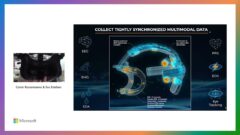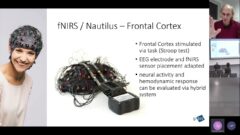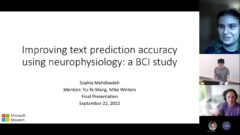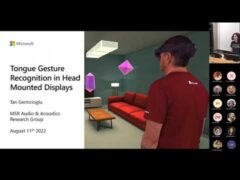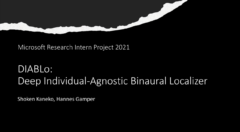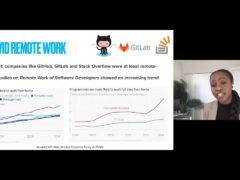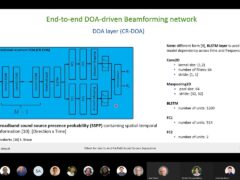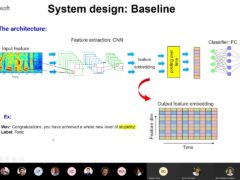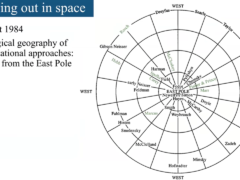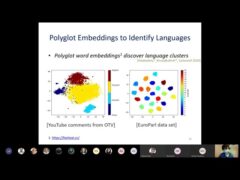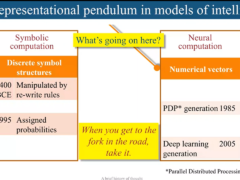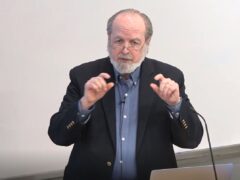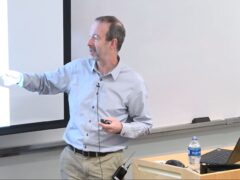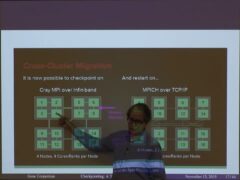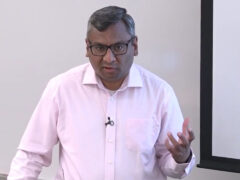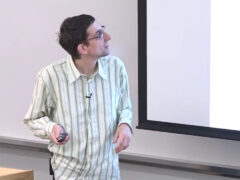Snow Hydrology at the Scale of Mountain Ranges
Worldwide, a billion people—including those in western North America—depend on winter snowfall and subsequent spring melt for their water. In the mountains themselves, the distribution and duration of snow drive ecological processes. So how do we measure the topographic and temporal variability of snow (its water equivalent) and subsequent melt, at scales of whole mountain ranges? Direct measurements with satellites currently flying or available in the next couple of decades are not feasible. Instead, we track the seasonal progression of snow cover and its albedo with remote sensing, and we model melt rates by combining that information with assimilated climate data. When the snow disappears, we can run the model backwards to estimate how much snow existed at peak accumulation, everywhere. This information is great for scientific analysis, but not much use in forecasting. Are there patterns we can observe earlier in the season that correlate with eventual runoff? This end-to-end scenario illustrates eScience problems that combine hydrologic and computer science: physics of the processes, interpretation of surface properties from satellite measurements, management of many disparate data records that are themselves big, computations that cover dimensions of time and 3D spatial coordinates at a scale where Earth curvature matters, pattern recognition and correlation, and possibilities for people with special expertise to contribute to parts of the whole. Our goal is to assess seasonal snow resources, relative to historical trends and extremes, in mountains with meager infrastructure, sparse gauging, challenges of accessibility, and emerging or enduring insecurity related to water resources.
Background reading, in case someone wants to do homework first. It’s just 3 pages:
Dozier, J (2011), Mountain hydrology, snow color, and the fourth paradigm, Eos, 92, 373-375, doi: 10.1029/2011EO430001, http://www2.bren.ucsb.edu/~dozier/Pubs/2011EO430001_rga.pdf
Speaker Details
Jeff Dozier, Visiting Researcher from University of California, Santa Barbara. I study snow, at scales that range from sintering between two small grains to estimating snowmelt runoff over whole mountain ranges. I’ve been at UCSB since the fall of 1974, so Santa Barbara has been a good place to think about snow and ice. My work at MSR addresses ways that we might combine satellite images and land-surface models to forecast snowmelt runoff in big mountain ranges worldwide, specifically in this case the Hindu Kush – a mountain range with meager infrastructure, sparse gauging, challenges of accessibility, emerging or enduring water-related insecurity, and substantial US investments in water management.
At UCSB, I served from 1994-2000 as the founding dean of the Bren School of Environmental Science & Management, and I teach courses in Earth System Science, the Mountain Snowpack, Remote Sensing, Environmental Modeling, and occasional seminars on topics like Climate Science and Economics. I used to be a serious rock climber and alpinist, with a dozen or so first ascents in the Hindu Kush and, in Tuolumne Meadows, a popular climbing feature named Dozier Dome. Now most of my mountain adventures involve skiing.
- Series:
- Microsoft Research Talks
- Date:
- Speakers:
- Jeff Dozier
-
-
Jeff Running
-
Series: Microsoft Research Talks
-
Decoding the Human Brain – A Neurosurgeon’s Experience
Speakers:- Pascal Zinn,
- Ivan Tashev
-
-
-
-
Galea: The Bridge Between Mixed Reality and Neurotechnology
Speakers:- Eva Esteban,
- Conor Russomanno
-
Current and Future Application of BCIs
Speakers:- Christoph Guger
-
Challenges in Evolving a Successful Database Product (SQL Server) to a Cloud Service (SQL Azure)
Speakers:- Hanuma Kodavalla,
- Phil Bernstein
-
Improving text prediction accuracy using neurophysiology
Speakers:- Sophia Mehdizadeh
-
-
DIABLo: a Deep Individual-Agnostic Binaural Localizer
Speakers:- Shoken Kaneko
-
-
Recent Efforts Towards Efficient And Scalable Neural Waveform Coding
Speakers:- Kai Zhen
-
-
Audio-based Toxic Language Detection
Speakers:- Midia Yousefi
-
-
From SqueezeNet to SqueezeBERT: Developing Efficient Deep Neural Networks
Speakers:- Sujeeth Bharadwaj
-
Hope Speech and Help Speech: Surfacing Positivity Amidst Hate
Speakers:- Monojit Choudhury
-
-
-
-
-
'F' to 'A' on the N.Y. Regents Science Exams: An Overview of the Aristo Project
Speakers:- Peter Clark
-
Checkpointing the Un-checkpointable: the Split-Process Approach for MPI and Formal Verification
Speakers:- Gene Cooperman
-
Learning Structured Models for Safe Robot Control
Speakers:- Ashish Kapoor
-





